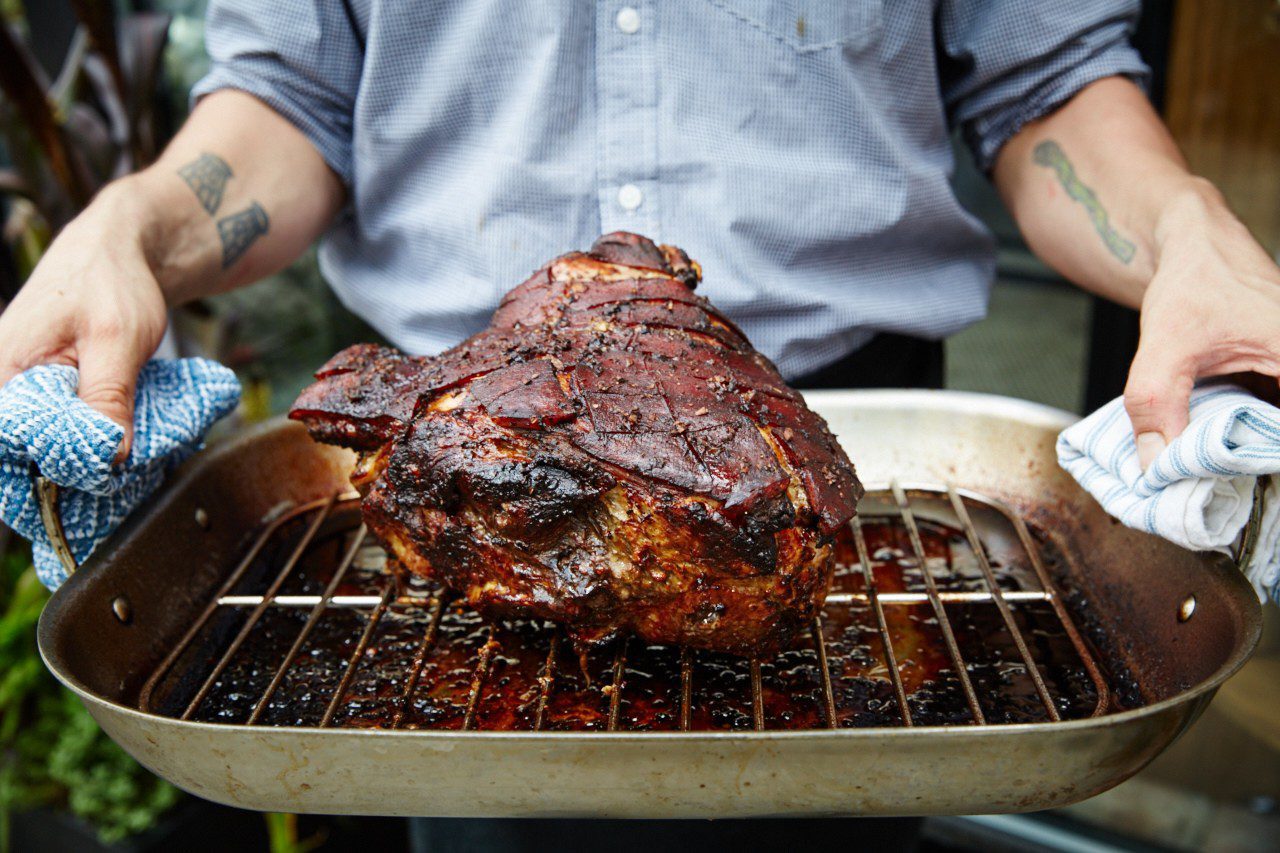Slow-Roasted Pork Shoulder Recipe

SERVES 8 This classic Puerto Rican roast pork recipe by J, Fox of Manhattan grass-fed-whole-animal butcher shop Hudson & Charles is also known as pernil. A major crowd pleaser, it’s also absurdly easy to make. It’s best marinated a day before cooking, but if time is short, a few hours will do. To do it right, you need a skin-on pork shoulder (order from a butcher shop) and a meat thermometer to ensure doneness. If the skin begins to look too dark during cooking, tent the pork with aluminum foil. After cooking, peel off the skin, chop it into a bowl, chunk the meat, and platter the skin and meat separately, pouring over the meat any juices that release during carving.
12 cloves garlic, mashed or pressed to a paste (makes about 3½ tablespoons paste)
1 cup orange juice
2 tablespoons fresh lemon juice
5 teaspoons sea salt or kosher salt
3 tablespoons white vinegar
1 tablespoon dried oregano
1 tablespoon freshly ground pepper
1 (7-pound) bone-in, skin-on pork shoulder (preferably the picnic cut, and pasture-raised), skin scored in a 1½-inch crosshatch pattern
In a bowl, mix the garlic paste, orange and lemon juices, salt, vinegar, oregano, and pepper until combined.
With a sharp knife cut about 15 (½-inch-deep) slits into the pork. Rub the marinade all over the roast, including into the incisions and scored skin. Transfer to a large ziplock plastic bag or container with a cover and marinate, turning occasionally to coat, for at least 4 hours and up to 2 days. Remove from the refrigerator 1 hour before cooking.
Preheat oven to 300°F. Place the roast, fat side up, in a large roasting pan fitted with a rack. Add 2 cups water to the bottom of the pan to catch fat drippings (add more water as needed during cooking to keep the pan from drying out) and cook until a meat thermometer inserted into the thickest part of the pork reaches 185°F, about 4½ hours.
Pull the crispy skin off the roast and roughly chop. Let the roast rest for 10 minutes, then slice the meat and serve with the roughly chopped cracklings.
Photo: Shay Harrington

